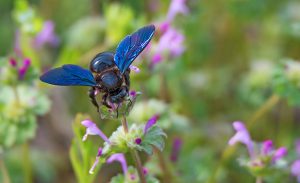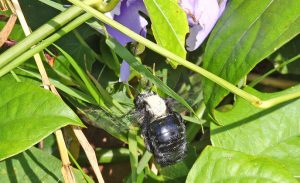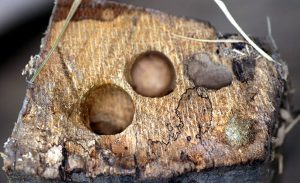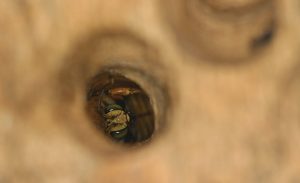Carpenter Bee Facts
- Size: Carpenter bees are roughly ½-inch to 1-inch long
- Color: Blue-black and yellow or black and orange
Carpenter Bee Social Behavior
Nesting habits in wood and structural timbers give the carpenter bee its name. Often confused with bumblebees because of their size and coloring, carpenter bees are known to make appearances outside of homes and in gardens during the late spring and early summer months. Indeed, given the 500 or so species spread across the globe, many popular references to bumblebees actually refer to this less-hairy cousin.
Both genders of carpenter bee are relatively harmless unless provoked, with males being more aggressive but lacking stingers. Unfortunately, due to their burrowing habits in wood, the bees can cause damage to structures if allowed to continue unchecked. In some species, sisters and daughters may overtake a single structure leading to more extensive tunneling and subsequent damage.
Carpenter bees spend much of their lives traveling from their nest to obtain food from nearby flowers. As such, the bees can be hard to spot and are more likely to be identified by their distinctive humming sound and nesting holes.
- Stings and Treatment
- How to get rid of Bees
- Bee Infestation
Latest Bees Updates
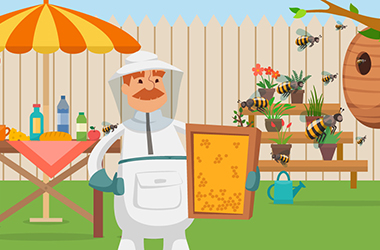
As backyard entertaining brings the indoors outdoors this summer, your backyard or pool deck may play host to quite a few cookouts and pool parties.

Bee adventurers go the extra mile for the survival of their colonies. In bee hives, only certain bees leave hives to hunt for new food sources and to find new accommodations once populations outgrow their current hives.
